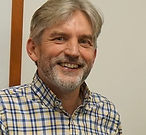SIMPLE WAYS TO TRACK CHURCH HEALTH IN A POST COVID WORLD
- Ian Duncum

- Mar 30, 2021
- 3 min read

A famous example of a failure to aviate is the December 1972 crash of Flight 401, an Eastern Airlines Lockheed L-1011. The entire crew was single-mindedly focused on the malfunction of a landing gear position indicator light. No one was left to keep the plane in the air, as it headed towards a shallow descent into the Florida Everglades. Four professional aviators —any one of whom could have detected the descent —were so focused on a non-critical task that they failed to detect and arrest the descent, resulting in 99 fatalities. They did not follow established aviation priorities —they failed to fly the aircraft first.
Aircraft have a battery of dials and lights in the cockpit. The critical time is when one of those lights indicates that the aircraft is off course or signals a malfunction. And that the indicator is then used to ‘fly the plane’ in a better way. In a similar way, there are two reasons to track church health statistics.
The first is to see how you are going against your vision (e.g. by 2025 we want to have 70% of attenders in small groups and have 60% of attenders serving/volunteering in some way). There is little point in having a vision if you do not set yearly goals and measure performance against them.
The second reason is to spot any warning signs that are developing, areas that need a course correction.
We need to collect the right statistics. The failure of measuring a church only by attendance, buildings and collections is clear. Pastoring through a pandemic can be a little like flying blind through a bank of cloud. Knowing which way is up and where we are going is helped by collecting health measures that are appropriate to the digital space that most churches are now inhabiting.
So these aren’t the only statistics I collect. Attendance, conversions, volunteers serving, percentage of people in small groups, and non-Christians connected with at events or groups are all important measures. You may gather different statistics, but the point is to make a start. Don’t collect too many or too often (remember Flight 401!) – I find monthly reflection is enough.
Facebook members. They don’t have to be regular church attenders. But they have connected with your church facebook site for a reason – they are looking to engage. And whether the number goes up largely depends on whether they feel connected and updated.
Email list. Again, they don’t have to be regular church attenders. But they have come to an activity or service and left their details. You need a good process and a point person for welcoming and incorporation to ensure that there is appropriate follow up that results in subsequent visits and attendance at activities. But ensuring that you have a regular email and are promoting services and activities in compelling ways to those who have already connected with your church is a great step. Again, is the trend upward?
Website views. You will want your website to be well used by those who are part of your church family but having a website link on your Google Maps entry and other events you promote through Facebook and email helps you identify click-through responses.
Youtube views. Not all churches may have a Youtube channel; you may use another platform such as Facebook Live or Online Church. Keeping track of views gives you an idea of how many people are accessing your services, and the direction of the trend. And how many people additional to your normal physical service are viewing online.
Everything has changed. So what matters must be measured. And the question we need to ask, for both digital and physical engagement is, “Are we moving people towards Jesus, and then towards mission/ministry/leadership? The point of measuring website views or Facebook members is to see how we are connecting with our local community. But then is it easy for them to go to the next step? And do we measure that step? Say connect with a virtual welcome Zoom, or an actual BBQ? They probably aren’t ready to sign up to a physical Alpha Course, but maybe they might do that online if we linked it?
We are in new territory that we have not been in before. We need to make new maps to help us know where we are and how to get to where we need to go.
© 2021 Ian Duncum. All rights reserved. No reproduction without written permission.
Rev Dr Ian Duncum is an author (The Impact of Church Consultancy is available here https://www.ianduncum.com.au/shop), and a consultant with 20 years experience of working with non-profit enterprises and churches across a number of denominations. This has included denominational leadership in church health and development, and research positions. Ian also trains church consultants, facilitates training for ministers and leaders, and provides coaching, mentoring and supervision for pastors and other leaders. He can be contacted through www.ianduncum.com.au or duncum@internode.on.net









Comments